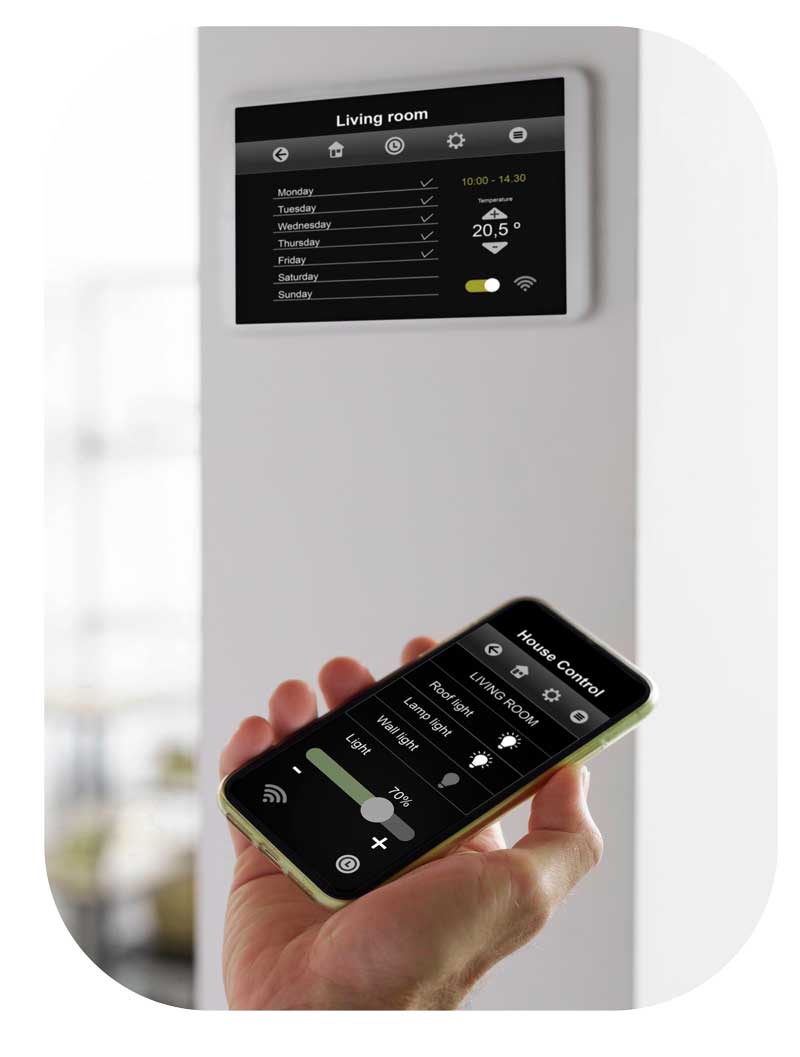In today’s technology-driven world, we are looking for methods to make life more efficient. This could involve the automation of tedious tasks, developing tools to save time and money, and much more. One of the ways to accomplish this is by using an extremely useful tool called the internet. With the internet, devices can share information and communicate from anywhere with a simple internet connection. There are approximately 5 billion people connected to the internet on Earth. However, it is estimated that there are more than 20 billion devices that interact with the web without human intervention. This is known as the Internet of Things (IoT).

What is the Internet of Things?
In simple terms, the IoT is an extension of the internet available to sensors, devices, and even simple objects like doors, locks, lights, etc. This could be as simple as your doors locking automatically at night, or perhaps security systems sending alerts to their owners. The IoT is seen commonly within our lives, even in medical practices. Through the development of IoT and its automation of everyday items, manufacturers have taken notice and have been incorporating this concept into industrial applications. Doing so has allowed for the creation of the IoT.
What is the IIoT?
The IIoT (Industrial Internet of Things) is an extension of the IoT and is a term used to encompass industrial applications like robotics, production software, and automation which correlates with the internet. The IIoT can connect machines, sensors, and tools to give workers much-needed insights into any production project. The IIoT has revolutionized the manufacturing industry and could still be used in a wide range of applications.
Applications and Benefits of IIoT
IIoT provides the necessary foundation for intelligent factories, and can provide numerous benefits to manufacturers. Below are a few benefits IIoT has to offer by integrating it into your operations:
Reduced Costs and Better Output
Through IIoT in manufacturing, machines can communicate with one another and design the most effective way to operate, which will reduce costs by cutting out wasteful procedures and optimizing energy consumption. IIoT also enables better efficiency by increasing machine utilization through OEE monitoring and minimizing scrap production. It ensures better quality and increased quantity.
Predicted Maintenance
IIoT in manufacturing can predict when maintenance may be required for your machines. Important data from the machines can be collected via sensors and analyzed by the appropriate personnel. Compared to reactive maintenance, where a worker would fix the problem as it presents itself (or notice physically if a problem could arise), predicted maintenance allows for troubleshooting to take place before a problem occurs. Doing so can decrease downtime and allows a longer lifespan of the equipment.

Digital Adoption
In this competitive world of manufacturing, it is important to incorporate new technologies. Presently, everything is going digital. It is a more efficient and sustainable way to manage everyday tasks. By going digital, it will pave the way for a new culture or process which gains the attention of our fast-paced world. It is better to be up-to-date with the times than fall behind and lose to a competitor.

Remote Control
When connected to the internet, machinery can be controlled from anywhere with a connection to the correct software. At any point, you can control equipment to have it operate according to a specific schedule, or have it automatically adjust its production based on changing conditions. Being able to control applications remotely would also allow to reduce the number of people needed in the field at any given time, minimize risks to human workers, provide remote access to information, and quickly stop operations in the event of a malfunction.
Data Centralization
As production progresses, it is important to ensure the efficiency of each machine is used to its full potential. With IIoT, information on each machine could be gathered simultaneously without the need to monitor each device individually. IIoT would centralize all data in real-time and in one place for quick analysis.
AI Applications
IIoT has the capability for machine learning and AI. This would allow for robots to automatically adapt to change in manufacturing environments without any human interaction. This could involve a machine knowing on its own that certain products are not being produced properly and adjusting accordingly to fix the problem. Machines could also learn from production rates and would adjust their efficiency to match the desired output.
Future of IIoT
Although IIoT applications have been around for a while, we haven’t even begun to scrape the surface of its capabilities. As connection technologies improve, IIoT is expected to grow as well. Industries are pushing to modernize their systems and equipments to keep up with market demands while still making improvements to safety, profitability, and efficiency. The IIoT provides the necessary solution and is expected to be common practice among manufacturers in the coming years. It is expected that 30 billion devices will incorporate IIoT by 2025.
That being said, as technology moves forward, IIoT applications improve, and they are now a must to stay competitive in manufacturing.